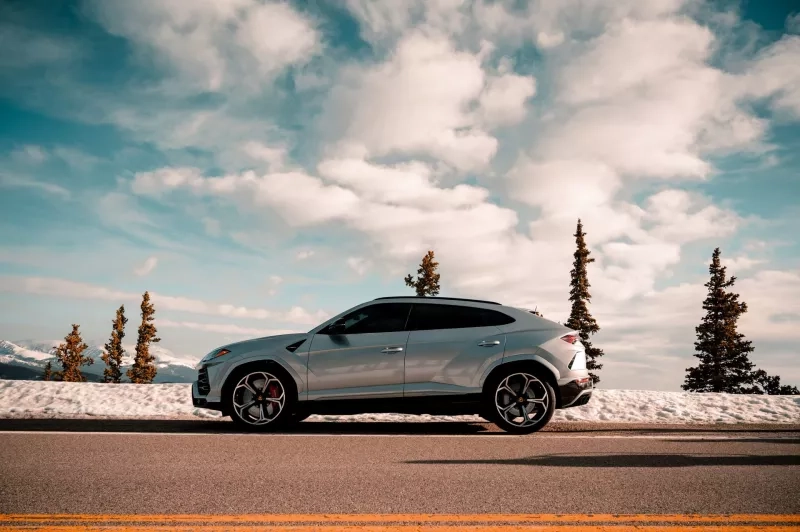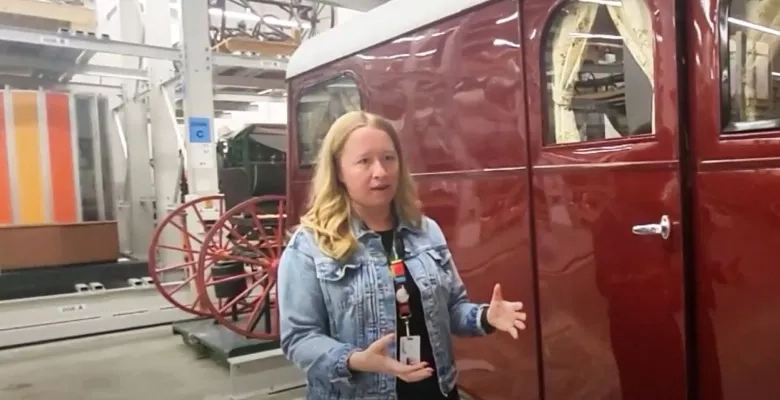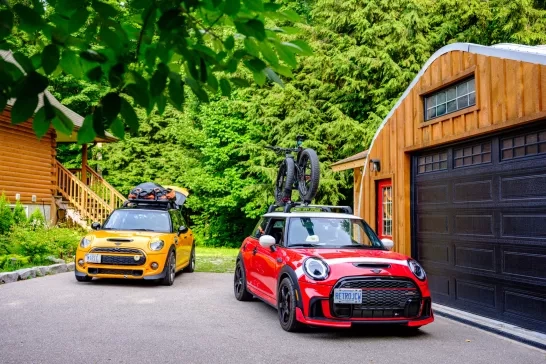
How big is too big?
3 Minute Read
Canadians love their large sport utility vehicles (SUVs) and pickup trucks. On average, we drive some of the biggest vehicles in the world. If you want proof, just take a look at your local grocery store parking lot.
We've all but abandoned sedans, station wagons and hatchbacks. Modern pickups and SUVs are, by far, the most versatile and capable modes of transport to ever roam the streets. But they come with a hidden cost.
Experts have long understood that bigger vehicles pose a greater threat to vulnerable road users, especially pedestrians and cyclists, in the event of a collision. Despite this fact, we keep buying big.
The good news is that there are some potential solutions on the horizon.
Looking at the trajectory
So, how did we end up here? The extreme popularity of these types of vehicles is a relatively recent phenomenon. Sales of SUVs, pickups, minivans, vans and heavy-duty trucks began to soar in 2009, according to Statistics Canada.
Between 2010 and 2021, StatCan reported that trucks jumped to 79 percent of new sales.
Today, more than four of every five new light vehicles sold in Canada are light trucks—primarily pickups and SUVs—according to market research firm DesRosiers Automotive Consultants. In fact, Canadians prefer SUVs even more than drivers in the U.S., according to research firm IHS Markit.
Fuelled by appeal
The reasons for the ongoing big-vehicle boom are complex. But the trend has undoubtedly been driven by consumer demand. Automakers also realized early on that manufacturing SUVs and trucks meant more profit.
From a consumer standpoint, most SUVs offer all-wheel drive and ride higher—making getting in and out easier—which are major benefits that often outweigh the higher cost. For some, a large cabin is necessary for work. For others, a ride with a more spacious interior and extra cargo room is simply preferred.
Does larger mean safer?
For many drivers, big cars feel safer, and there's some truth to that. The U.S. Insurance Institute for Highway Safety (IIHS) found that larger vehicles are safer for their occupants than smaller ones. For the passengers of smaller ones, however, it's a different story. Between 2013 and 2016, pickups were two and a half times more likely than regular cars to cause fatal injury to the driver of a car they collided with.
But in recent years, IHS says automakers have reduced the threat SUVs and pickups pose by improving their energy-absorbing structures so they aren't as hazardous to people in smaller models.
Vulnerable road users at risk
The most pressing and well-documented problem with this trend—in addition to the increased pollution—is that larger vehicles are more likely to harm pedestrians or cyclists in the event of a collision. They are particularly fatal for children, too.
Despite recent changes in automotive design aimed at improving pedestrian safety, IIHS reports that SUVs are still more likely to injure pedestrians than cars. SUVs are more dangerous to vulnerable road users at speeds above 30 km/h. They suggest that tall bumpers and front grilles are the primary causes of injury.
"[Transport Canada] is aware of the additional potential hazard to which vulnerable road users are exposed while circulating adjacent larger vehicles and is working to improve safety for all road users," a spokesperson for Transport Canada wrote in an email. In addition, the department is evaluating the adoption of collision avoidance technologies, such as automatic emergency braking (AEB). Though it's not perfect, AEB can detect pedestrians and slam on the brakes if the driver fails to do so.
Prevention updates
Preventing collisions is crucial, and the U.S. National Highway Traffic Safety Administration (NHTSA) shares this view. Earlier this year, it proposed upgrading its Five-Star Safety Ratings system. The system, which is also commonly used in Canada, will better consider the safety of people inside and outside a vehicle. This is an important step toward improving roads for all users.
Other solutions are also in the works, such as advanced collision-avoidance technologies, redesigned streets, and new safety ratings.
Do your part
While we wait for more substantial changes to these larger vehicle models, there are some simple ways drivers can mitigate the added risk they pose.
First, be mindful of your blind spots. Don't rely on technology and always do over-the-shoulder checks, says Teresa Di Felice, assistant vice president for government and community relations at CAA South Central Ontario. "SUVs tend to have bigger blind spots because of higher design and longer hoods, making it harder to see," Di Felice explains. She also suggests that if your vehicle has advanced safety features (e.g., AEB), learn what they can and can't do. And as always, minimize distractions, put the phone away and watch your speed.
It's not just what we drive that can impact other road users; it's also the way we drive.
Ensure you're protected
If you have questions about your auto insurance or would like a complimentary policy review, connect with a licensed CAA Insurance Agent by visiting us online.
Auto Insurance is underwritten by CAA Insurance Company. Certain conditions, limitations and underwriting guidelines apply.




